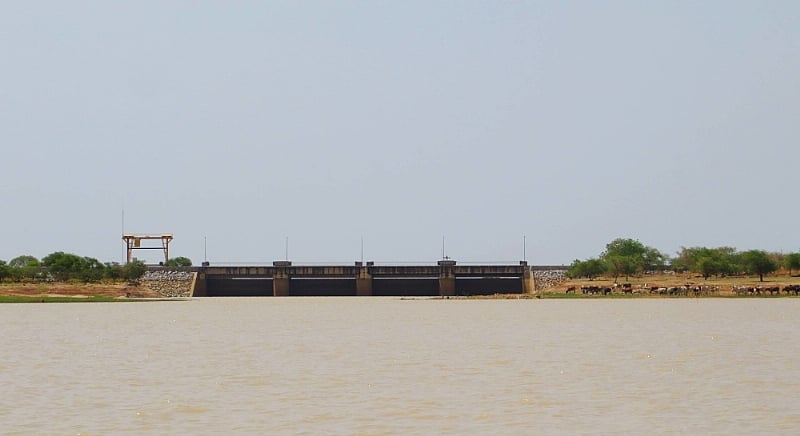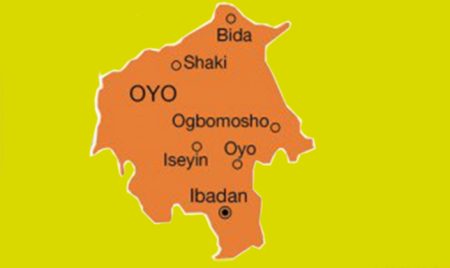The imminent spillage of the Bagre and Kompienga dams in Burkina Faso has cast a shadow of anxiety and fear over farming communities along the White Volta River basin in Ghana. The short notice provided by Burkina Faso’s power-producing company, SONABEL, which manages the dams, has exacerbated concerns, as farmers have been given limited time to prepare for the impending deluge set to begin on August 25th, 2025, two days earlier than initially projected. This truncated timeframe has left many farmers scrambling to salvage their crops before the floodwaters arrive, creating a sense of urgency and desperation in the affected regions. The primary concern revolves around the potential for widespread crop destruction, particularly as many farmers have not yet completed their harvests. The early millet and maize crops are especially vulnerable, threatening the livelihoods and food security of families who depend on these harvests. The situation is further complicated by recent rains that have already saturated the river systems, increasing the likelihood of severe flooding and exacerbating the potential for damage.
The decision to advance the spillage date stems from rapidly rising water levels in both dams. The Bagre Dam, the larger of the two, is nearing its maximum capacity, with water levels just shy of the maximum retention level. The Kompienga Dam, while not as full, is also experiencing a significant increase in water levels. This rapid rise has necessitated the earlier release of water to prevent overtopping and potential dam failure, prompting SONABEL to prioritize dam safety over the downstream impacts on Ghanaian communities. The historical precedent of annual spillages adds to the current anxiety. These events have consistently resulted in significant flooding in downstream Ghanaian communities along the White Volta River, particularly in the Upper East and North East Regions. The consequences have been devastating, ranging from the destruction of farmlands and livestock to damage to property and, tragically, loss of life.
These past experiences underscore the significant economic and social repercussions of the dam spillage. The sudden flooding often wipes out entire harvests, disrupting the livelihoods of farmers and contributing to food insecurity in already vulnerable communities. The displacement of families, destruction of homes, and loss of livestock further compound the challenges faced by these communities, creating a cycle of vulnerability and economic hardship. In the Upper East Region, several districts are particularly susceptible to flooding, including Binduri, Bawku West, Garu, Bawku Municipal, Tempane, Talensi, and Nabdam. Farmers cultivating crops such as rice, maize, millet, and vegetables along the White Volta River bear the brunt of the impact, facing the prospect of losing their entire investments and facing an uncertain future.
In response to the impending crisis, authorities are working to mitigate the potential damage and ensure the safety of residents in the affected areas. The Water Resources Commission in Ghana has issued warnings and advisories, urging communities to relocate to higher ground. However, the effectiveness of these efforts is hindered by the short notice and the fact that many farmers are still actively harvesting their crops. While prioritizing the safety of human lives, officials acknowledge the inevitable loss of crops, further underscoring the precarious situation faced by farmers in the region. Local organizations and government agencies are also stepping up efforts to raise awareness and provide support.
The Peasant Farmers Association of Ghana (PFAG) has highlighted the recurring nature of these losses and called for long-term solutions, including the establishment of buffer zones along the riverbanks to prevent farming in high-risk areas. This approach aims to create a physical separation between agricultural activities and the fluctuating water levels, reducing the vulnerability of crops to flooding. This preventative measure could significantly mitigate future losses and offer a more sustainable solution to the annual threat posed by the dam spillages. National and regional disaster management organizations are actively involved in disseminating information, raising awareness about the impending spillage, and implementing precautionary measures. They are also tasked with monitoring the situation on the ground and providing assistance to affected communities, including support for harvesting efforts and providing relief in the aftermath of the flooding.
The annual spillage of the Bagre and Kompienga dams presents a complex challenge, highlighting the delicate balance between water management practices, agricultural livelihoods, and disaster preparedness. While the primary focus remains on protecting lives and minimizing immediate damage, the long-term implications for food security and economic stability necessitate a broader approach. This includes implementing sustainable land management practices, developing early warning systems, and fostering cross-border cooperation to ensure better coordination and communication between Burkina Faso and Ghana in managing the impact of the dam spillages. The situation underscores the need for a comprehensive strategy that addresses both the immediate crisis and the underlying vulnerabilities of communities living along the White Volta River basin. This includes investing in infrastructure, developing more resilient agricultural practices, and providing support for affected communities to adapt to the recurring challenges posed by the annual flooding.














